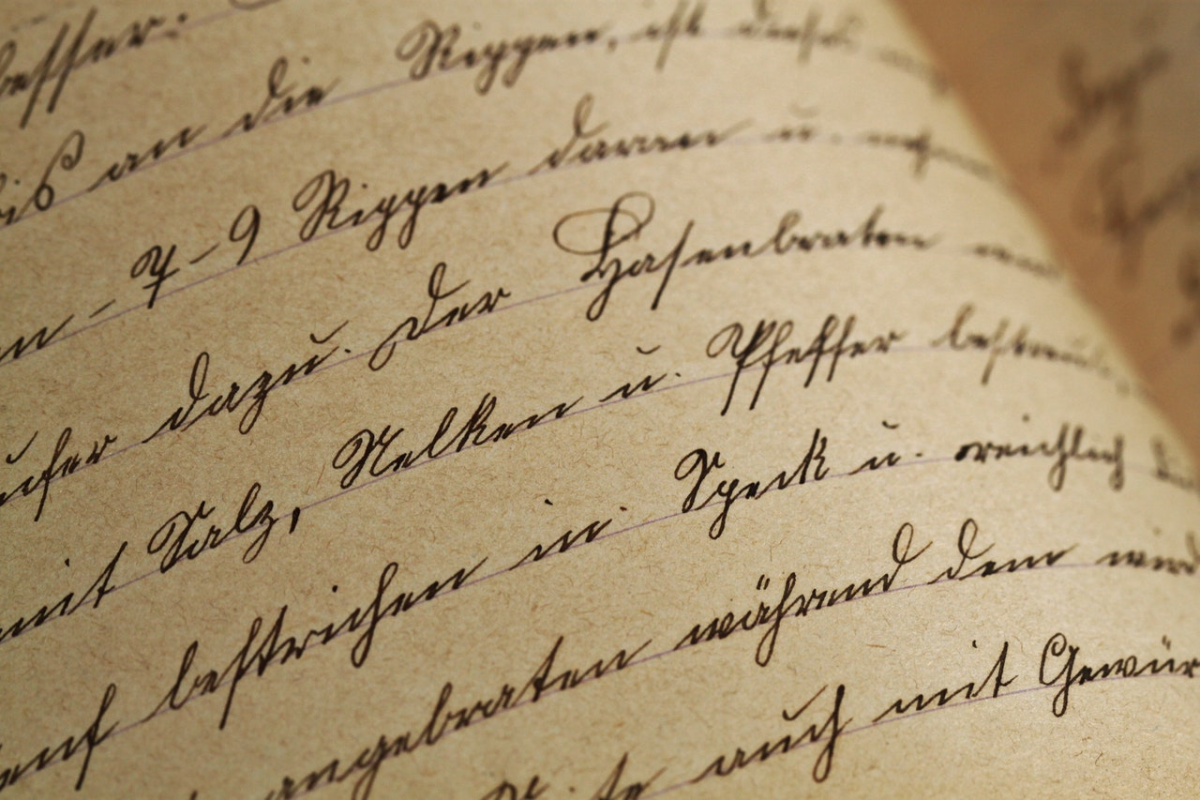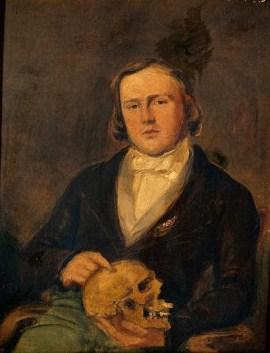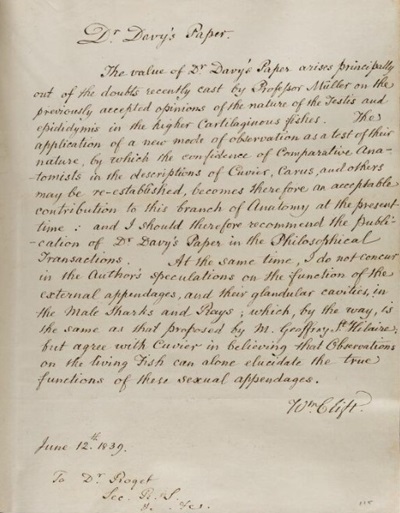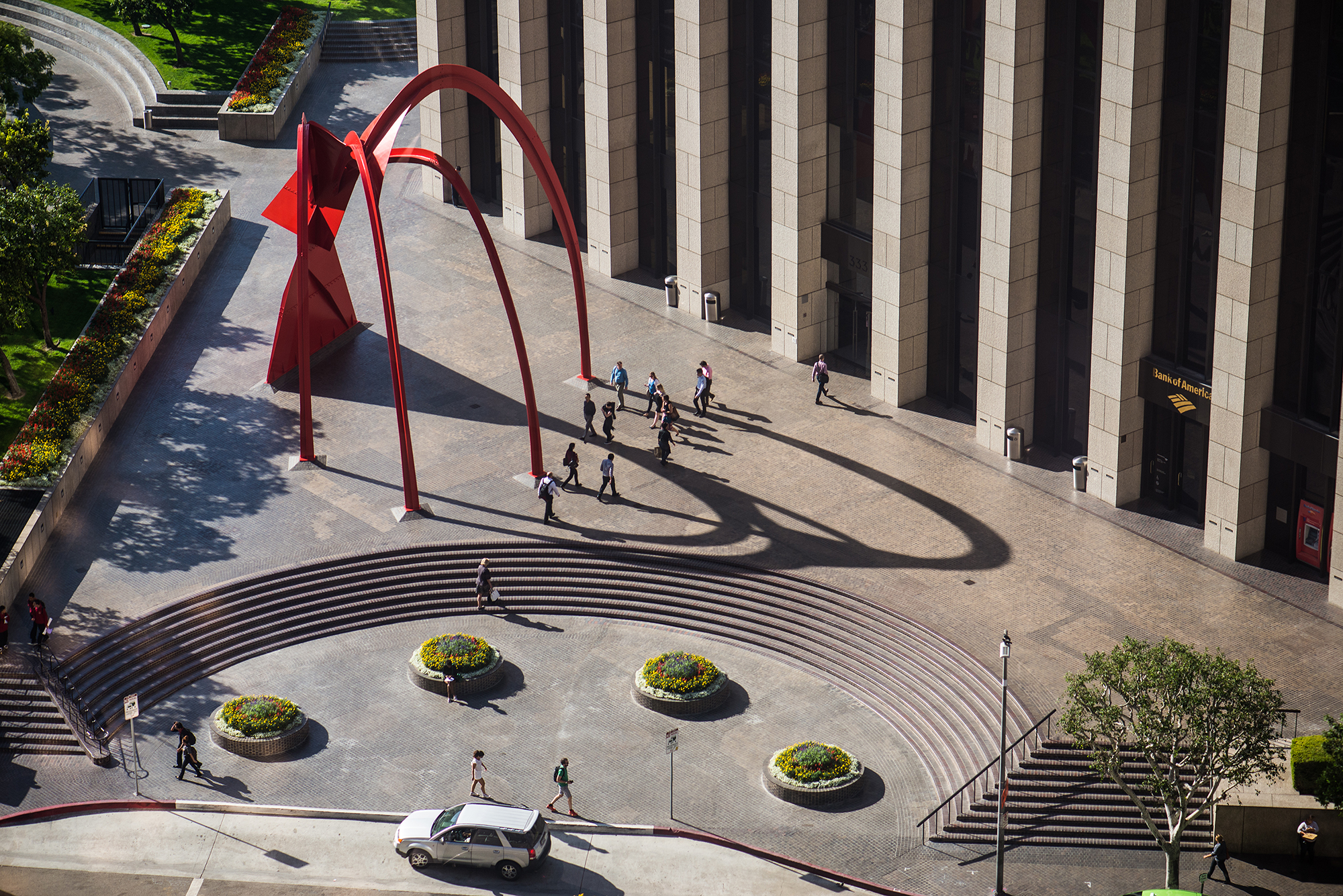Peer review has been a cornerstone of the Royal Society publishing process since the early 1830s. Historian Aileen Fyfe discusses here the evolution of pre-publication decision making at the Royal Society, leading to the referee reports employed by journals today.

The Royal Society has been seeking explicit, written opinions from referees as part of its pre-publication decision-making process since the early 1830s. Its decision to use what we would now call ‘peer review’ was made in the context of vehement public criticisms of its administrative processes. One of the critics was the physician-midwife Augustus Granville (pictured right), whose book condemning the lack of leadership at the Society was called Science without a Head. Refereeing emerged as a more trustworthy model for editorial decision-making, even though Granville noted that relying on the opinions of individuals – with their conscious and unconscious biases – might be ‘vastly objectionable’. To understand why, we need to look at the perceived problems with the previous ways of making editorial decisions for Philosophical Transactions.
Its decision to use what we would now call ‘peer review’ was made in the context of vehement public criticisms of its administrative processes. One of the critics was the physician-midwife Augustus Granville (pictured right), whose book condemning the lack of leadership at the Society was called Science without a Head. Refereeing emerged as a more trustworthy model for editorial decision-making, even though Granville noted that relying on the opinions of individuals – with their conscious and unconscious biases – might be ‘vastly objectionable’. To understand why, we need to look at the perceived problems with the previous ways of making editorial decisions for Philosophical Transactions.
From 1665 to 1752, decisions about what went into each issue of the Transactions had been made by its editor. He might occasionally consult a friend about a particular item, or take into account the reactions to a paper that had been read at a Royal Society meeting – but it was ultimately up to the editor to insert what he wanted. This style of executive decision-making could be efficient and effective, but it depended very much on the character of the individual acting as editor.
In the early 1750s, the Transactions was publicly critiqued for carrying trivial and ridiculous material. This was highly embarrassing for the Royal Society, whose public reputation was inextricably linked to the Transactions. So, in 1752, the Society formally took control of the Transactions, and replaced the role of editor with an editorial committee which made decisions by vote. This avoided the problem of trusting the institutional reputation to the failings or prejudices of any one individual. From the perspective of the Society, a committee of Royal Society fellows seemed like a more trustworthy editorial solution. The legacy of this rationale can still be seen in modern academic journals, where the existence of editorial boards, associate editors and peer reviewers enables journals (usually) to be the voice of scholarly communities rather than of individual academics.
An editorial committee had another advantage: it brought a wider range of expertise into the editorial process. But by 1830, editorship by committee no longer seemed as trustworthy as it had in the 1750s, both in theory and specifically in the case of the Royal Society.
The issue in 1830 was expertise and scrutiny. Scientific research was (already) becoming more specialised, and even in ideal circumstances, was it likely that any committee could have the appropriate expertise for any possible paper submitted to an organisation with such a broad remit as the Royal Society (the entire natural sciences)? Referees were not a replacement for the editorial committee, but a way of augmenting its expertise on an ad hoc basis.
The particular critique directed at the Royal Society’s editorial committee in 1830 was two-fold: first, that some of its members had ‘not the smallest pretension to any knowledge whatever of the subject under consideration’; and second, the committee was supposed to vote on its decisions based only on the summaries of the papers presented at the meeting, and with no discussion. Was this really a trustworthy way of evaluating papers?

Referee report by W. Clift on 'On the Male Organs of Some of the Cartilaginous Fishes' by J. Davy, 1839. From The Royal Society, RR/1/53
The decision to send papers to referees for evaluation was a solution to these problems. It ensured that papers were scrutinised in full by one or two people (though not by the entire committee); that those people gave considered and thoughtful judgements (because they had to write a report, rather than just vote yea or nay); and that someone with appropriate expertise could be consulted for each paper. It did bring individual opinions (and possible prejudices) back into the editorial process, but in a far more limited way than when an editor had made all the decisions.
Ever since, the Royal Society has operated an editorial system that combines close scrutiny by individual experts (refereeing, or peer review) with community responsibility (editorial committees); it reintroduced the role of ‘editor’ in the 1980s to bring leadership and strategic direction.
These historical episodes help us to appreciate how peer review – even with its flaws – helped make the wider editorial system more trustworthy.
If you would like to know more about the history of peer review at the Royal Society, see Moxham, N., & Fyfe, A. (2018). The Royal Society and the prehistory of peer review, 1665-1965. Historical Journal, 61: 863-889. https://doi.org/10.1017/S0018246X17000334
If you would like to know more about distributed and collective systems of editorship, see Fyfe, A. (2020). Editors, Referees and Committees: distributing editorial work at the Royal Society journals in the late nineteenth and twentieth centuries. Centaurus, 62: 125-40. https://doi.org/10.1111/1600-0498.12266
Image credits:
Portrait - Augustus Bozzi Granville MD FRS. From Wikimedia Commons under CC-BY 2.0 license.
Referee report by W. Clift on 'On the Male Organs of Some of the Cartilaginous Fishes' by J. Davy, 1839. From The Royal Society, RR/1/53




